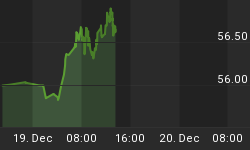In economics, as in many other "soft sciences," facts are often overshadowed by theories. The dominant economic theory currently in vogue is that the massive government stimuli orchestrated by the Bush and Obama administrations would produce an economic recovery by the end of this year.
Thus, it is no surprise that media cheerleaders have seized on the recent steep, but thinly traded, rally to find the facts that appear to fit the theory. From where do these talking heads draw this conclusion?
In recent months, we have allowed for the probability that a bear market rally, driven by seemingly low price-earnings multiples, would take hold for the first half of 2009. Months ago, I had stated that the rally would reasonably last into the summer and that the Dow could reach 10,000 before the next major downturn begins.
In the depths of the stock market crash of 2008/9, buying opportunities certainly arose. By March 2009, stock markets appeared to have been oversold. Certainly price-earnings multiples on many stocks had been compressed to generational lows. Ignoring the fact that these low multiples were underpinned by pre-recession earnings data, investors declared a bottom.
However, as is the tendency with sudden declines, bargain hunters entered the market too aggressively. On relatively thin trading levels, this led to a steep rise in stock prices which, in turn, drew in investors who feared being left behind. A steep bear market rally was in place. This mirrored the pattern of the Great Depression, when the initial crash was followed by a 68 percent rally in 1930. But after that rally had fizzled, stocks then declined by an astounding 86 percent over the two subsequent years.
While we urged caution in this rally by highlighting, among other indicators, a 38 percent decline in corporate earnings, speculative traders made enormous profits as stock markets rose by over 40 percent. But as dismal economic statistics continue to rain on everyone's parade, the cheers are beginning to subside. Last week, the unemployment figures were released and the Dow slid by some 223 points.
Now, even speculative traders are preparing for a drop. The new-found concern is due to three basic indicators:
First, the U.S. dollar, linchpin of all American (and most global) transactions, is appearing increasingly weak. 10-year Treasury yields, as low as 2.1 percent post-crash, and continuing to stay below 4 percent, indicate a persistent bubble in "safe" U.S. bonds and cash.
Certainly, the fiscal situation of the United States government doesn't warrant the confidence placed in its debt. The U.S. will soon have to choose between outright default and hyperinflation. The BRIC countries are already preparing themselves for the latter eventuality by seeking alternatives to the dollar.
Second, there has been a realization that the low multiples of March 2009 were largely illusory. With corporate earnings falling faster than share prices, price-earnings ratios are still high and historically expensive for an economy in an official recession.
Third, employment figures have been so bleak that the financial spin-doctors have been suggesting a "jobless recovery"! Reading between the lines, that means even the most deluded forecasters cannot find an argument for hiring to resume.
Despite the enormous stimulus packages, there are now roughly 15 million Americans unemployed, the highest total for some 26 years. Worse still, the official figures do not include the long-term unemployed or those who have been forced to accept part-time employment. If these "unofficial" unemployed figures were included, the total would be nearer to 20 percent than the official 9.6 percent. Furthermore, annualized figures show Americans earning less for each hour worked.
There can be little wonder that consumers are hoarding cash, increasing their savings and not buying on Main Street. American consumers are in a state of financial shock. The U.S. economy is heading deeper into severe recession, even depression.
The facts are universally bearish for the American stock markets. As for the pundits' sentiments, you can measure their value by how much you personally pay for CNBC (very little) versus your cost if they're wrong (very much). Now, there's a statistic!
For a more in-depth analysis of our financial problems and the inherent dangers they pose for the U.S. economy and U.S. dollar, read Peter Schiff's newest book "The Little Book of Bull Moves in Bear Markets." Click here to order your copy now.
For a look back at how Peter predicted our current problems read the 2007 bestseller "Crash Proof: How to Profit from the Coming Economic Collapse." Click here to order a copy today.
More importantly, don't wait for reality to set in. Protect your wealth and preserve your purchasing power before it's too late. Discover the best way to buy gold at www.goldyoucanfold.com. Download Euro Pacific's free Special Report, "Peter Schiff's Five Favorite Investment Choices for the Next Five Years", at http://www.europac.net/report/index_fivefavorites.asp. Subscribe to our free, on-line investment newsletter, "The Global Investor" at http://www.europac.net/newsletter/newsletter.asp. And now watch the latest episode of Peter's new video blog, "The Schiff Report", at http://www.europac.net/videoblog.asp.















